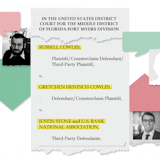What if we made voting an agent of equality, not inequality? And how can we get there?
If you are a college student or a working recent high school graduate, poor, Latino, or someone who moves more frequently, you are less likely to vote. Seniors are much more likely to vote than young people, in some elections at twice their rate. Those with college degrees vote in higher numbers than the less educated. Minority voters are more likely to wait longer in line to vote in person, sometimes for hours, and they, young people and first-time voters are more likely to have an absentee ballot rejected for nonconformity with technical rules. Poor voters are less likely to have the time off work to vote at all, much less wait in a long line to vote. Voters in big cities, who tend to be younger, poorer and browner, have coped with more serious election problems than others in voting in person and by mail during our coronavirus-laden primary season, like the Milwaukee voters who saw 175 out of 180 polling places closed during the April 7 Wisconsin primaries.
In a democratic system, we expect our elected officials to be responsive to the views and interests of the voters. If the universe of voters — and, of course, campaign donors — is skewed toward older, wealthier, better educated whiter voters, political decisions will be as well. We need equality in voting rights and turnout to assure responsive representation and social policy that reflects everyone's needs, not just those most likely to turn out with their votes and dollars.
Let's start with the causes of the problem. The COVID-19 pandemic has laid bare three pathologies with how we protect voting rights in the United States, and why the skew in voter turnout remains persistent.
First, the U.S. election system features deep fragmentation of governmental authority over elections. Not only does the U.S. use a highly decentralized and localized election system that gives many powers over national elections to state and local bodies, but also, even within the approximately 10,500 bodies expected to run the 2020 election, there is sometimes disagreement over who has decisionmaking authority over voting rights decisions. In the recent chaos of the June 9 Georgia primary, for example, the secretary of state and counties including the area around Atlanta pointed fingers at one another as to who was to blame for long lines, inoperable new voting machines rolled out for the first time in a presidential election year and closed polling places.
Second, protection of voting rights in the U.S. is marked by polarized and judicialized decisionmaking. Some Republican decisionmakers controlling some aspects of American election machinery have pushed for laws and policies that make it harder for students, the poor and minority voters to register and vote, leading to a pushback by Democrats and voting rights groups to loosen those restrictions. Often this battle takes the form of unsubstantiated claims of voter fraud, such as President Donald Trump's recent false claims about vote-by-mail, a method of voting he and his closest friends and advisers are comfortable using themselves. These politicians often use antifraud messages to justify restrictive voting laws or, in the case of the pandemic, a refusal to modify laws to assure continued access to the ballot. Mr. Trump's irresponsible tirades against mail-in balloting during the pandemic are particularly confounding, and make it more likely that his own rural and poorer supporters will either not vote or not be able to vote safely.
Given the highly litigious nature of American society and American election law in particular, these political fights often wind up in court, and sometimes break along party lines in the courts as well. Protecting voting rights in 2020 America requires a state-by-state slog and often litigation in an uncertain legal environment. These battles have been especially intense since the Supreme Court in its 2013 decision in Shelby County v. Holder killed off a key protection for minority voters in the Voting rights Act.
Finally, and related to this last point, constitutional protections for voting rights remain weak. The U.S. Constitution contains no affirmative right to vote. It speaks of voting rights mostly in the negative: thanks to a number of constitutional amendments, it is now illegal to bar someone from voting on the basis of race, gender, age of at least 18, or through the use of a poll tax.


